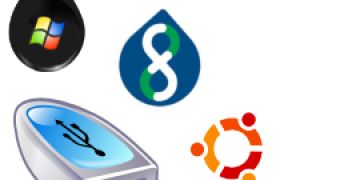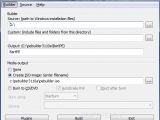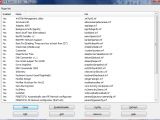USB technology is undoubtedly the jolt computing needed at the time it was launched. It started with the slow-running USB 1.0. Then it continued with the ubiquitous 2.0 standard that will have to do until USB 3.0 will be released later this year and devices will be largely available at a reasonable price. But USB is mostly known because of the little thumbdrives that tend to make our life more and more comfortable by providing a neat alternative to carrying our files around.
Software developers have speculated the need for running applications directly from a removable device and have created portable applications you can use on any computer without altering your settings in any way. But the need to have portable applications kept on growing and USB sticks had to become the replacements for boot CDs and even more.
With the use of some simple tools, you can expand the functionality of a removable drive and raise it to a level where you can use it to boot an entire operating system and work in it as if it were installed on the primary drive of your computer.
For Windows fans two apps have drawn our attention, one for transforming the flash drive into the home of an abridged version of Windows XP Live CD and running it in case the OS installed on the fix drive refuses to boot and you need to fix it or recover some data, and another one for using XP virtually, nice and easy, without affecting the host in any way.
Bart's PE Builder
For building a live Windows CD, Bart's PE Builder is required and a copy of Windows, as well as a bit of effort on your part as the process is not as straightforward and easy as one thinks, but nothing an average user can't deal with.
There are plenty of tutorials on the Internet explaining each step of how to create an abridged version of Windows boot from a USB key. The process is pretty simple once you get all the tools, namely a legit copy of Windows XP, a disk format tool from HP, Service Pack 1 of Windows 2003 Server (you just need to extract some files from it) and Pe2usb.cmd to wrap the image into bootable ISO from Bart PE's maker. PE Builder is of course paramount to the entire process.
Bart's PE Builder allows you to create an ISO image of the customized XP as well as burn it to a disc. It even comes prepared with a bunch of configurable plugins, which are nothing but apps that you may find useful, such as a file manager, network support, disc burners, antivirus programs or remote desktop solutions. For all this to be available in the USB version of XP you will first need to install them on the desktop and then copy the files into the corresponding folder of the “Plugins” directory in BartPE installation.
Once you've figured out all the steps, you are ready to build your slimmed-down version of XP. The entire process does not take long considering that PE Builder extracts only the most necessary files from the OS, sizing all up to a 150MB ISO. The result is an extremely contracted version of Windows XP, which does not resemble the original one bit (Windows Explorer is replaced by a different shell) but which will prove quite useful when hard times hit and you need to repair your desktop OS or at least rescue as much data as you need in order to avoid a total data loss.
During the boot everything is loaded in the RAM of your system and run from there so you can unplug the flash drive with no problem. The lower limit required for everything to run is about 256MB of physical memory, quite low if we are to consider today's requirements for operating systems.
| Next

 14 DAY TRIAL //
14 DAY TRIAL // 


